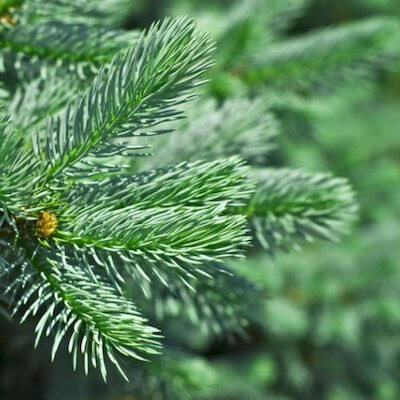Softwoods
A forest is a carbon bank, every tree a deposit.
Spruce trees are evergreen conifers from the genus Picea, native to the northern hemisphere. They are recognized by their needle-like leaves, which grow individually from small, woody pegs on their branches, and their iconic cones. These trees thrive in cooler climates, commonly found in regions like Canada, northern Europe, and Siberia, where moist soils and consistent rainfall support their growth.
Known for their light weight, strength, and durability, spruce wood is widely used for constructing homes, making furniture, and producing paper products. Their symmetrical shape and dense foliage also make them a favorite for Christmas trees. However, old-growth spruce forests are increasingly under threat from deforestation and habitat loss, which can have profound effects on ecosystems and wildlife.
Spruce trees are ecologically significant, offering critical habitat for birds, small mammals, and insects. They also contribute to soil stability and help prevent erosion. Beyond their ecological role, spruce trees have a history of use in traditional medicine. Spruce needles, rich in vitamin C, can be brewed into a tea that supports the immune system and helps treat colds, flu, and respiratory ailments.
Despite their many benefits, spruce trees face challenges due to environmental degradation. Preserving these vital trees is crucial not only for biodiversity but also for the health and balance of the ecosystems they support. By recognizing their importance, we can work towards ensuring their survival for future generations.
Spruce trees come in a variety of species, each with distinct features and uses. Below are some of the most notable types of spruce trees:
Although spruce trees share common features like needle-like leaves and conical shapes, their specific traits and applications vary. Some, such as the Norway and Colorado Blue spruce, are better suited for ornamental purposes, while others like the Black and White spruce are primarily used for timber and paper production.
Beyond their industrial uses, spruce trees hold medicinal value. In traditional medicine, spruce needles have been used to make vitamin C-rich teas that help boost the immune system and alleviate colds, flu, and respiratory issues. Their ecological and commercial versatility makes spruce trees an integral part of diverse ecosystems.
Black spruce thrives in colder climates, primarily in USDA growing zones 1 through 5. These regions encompass northern Canada, parts of Alaska, and the northern United States. The tree's resilience to harsh winters and its preference for moist, acidic soils make it a staple in boreal forests.
Spruce wood is a highly valued material in the construction and woodworking industries, thanks to its unique features and versatility. Key characteristics include:
Spruce wood’s combination of strength, workability, and aesthetic appeal has made it a staple in the construction and woodworking industries. Its widespread availability and eco-friendly sourcing further enhance its appeal, offering a sustainable option for builders, architects, and designers seeking reliable and versatile materials.
Norway, Blue, Black, White, and Sitka Spruce trees play a critical role in the environment by sequestering significant amounts of carbon dioxide from the atmosphere through photosynthesis. As they grow, these trees absorb CO2 and release oxygen, helping to combat climate change and improve air quality.
Beyond their carbon-sequestering abilities, spruce trees serve as a sustainable timber resource. With proper forestry management, harvested trees are replaced with new plantings, ensuring a renewable and eco-friendly supply of wood products for construction, paper, and other uses.
Spruce forests also create essential wildlife habitats and thriving ecosystems. Their dense branches offer shelter and nesting opportunities for birds, while their trunks and bark provide cover and homes for small mammals. These animals, in turn, contribute to seed dispersal and forest regeneration, further enhancing biodiversity.
By planting spruce trees, we can positively impact the environment by capturing carbon, providing renewable resources, and supporting rich and diverse ecosystems.
Modern spruce tree plantations adopt innovative geometric spiraling patterns instead of traditional row planting. These designs stimulate accelerated tree growth by stretching the cellular structure of the trees, allowing them to grow taller and stronger. Planting diverse species such as Norway and White Spruce enhances the resilience and productivity of spruce wood plantations, ensuring long-term sustainability and ecological health.
Softwoods, the pioneer species of the temperate forest, grow quickly to leave their mark on the landscape for centuries.
Partner with us in a land management project to repurpose agricultural lands into appreciating tree assets. We have partnered with growingtogive.org, a 501c3 nonprofit, to create tree planting partnerships with land donors.
We have partnered with growingtogive.org, a Washington State nonprofit to create a land and tree partnership program that repurposes agricultural land into appreciating tree assets.
The program utilizes privately owned land to plant trees that would benefit both the landowner and the environment.
If you have 100 acres or more of flat, fallow farmland and would like to plant trees, then we would like to talk to you. There are no costs to enter the program. You own the land; you own the trees we plant for free and there are no restrictions; you can sell or transfer the land with the trees anytime.
Copyright © All rights reserved Tree Plantation


